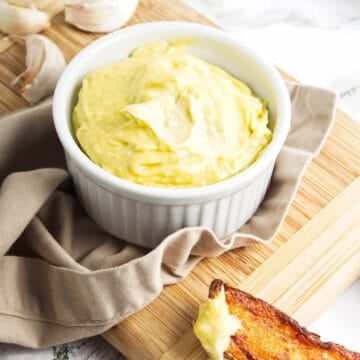This Eggless Garlic Mayonnaise is rich and tangy and complements a wide range of foods. The elegant Italian name for this condiment is Maionese all’aglio. A simple blend of common ingredients leads to an extraordinary condiment of gourmet quality.
One of my favorite ways to use this mayo is on a classic egg salad sandwich made with my Amish style bread recipe. Also, try this mayo when making old-fashioned potato salad.
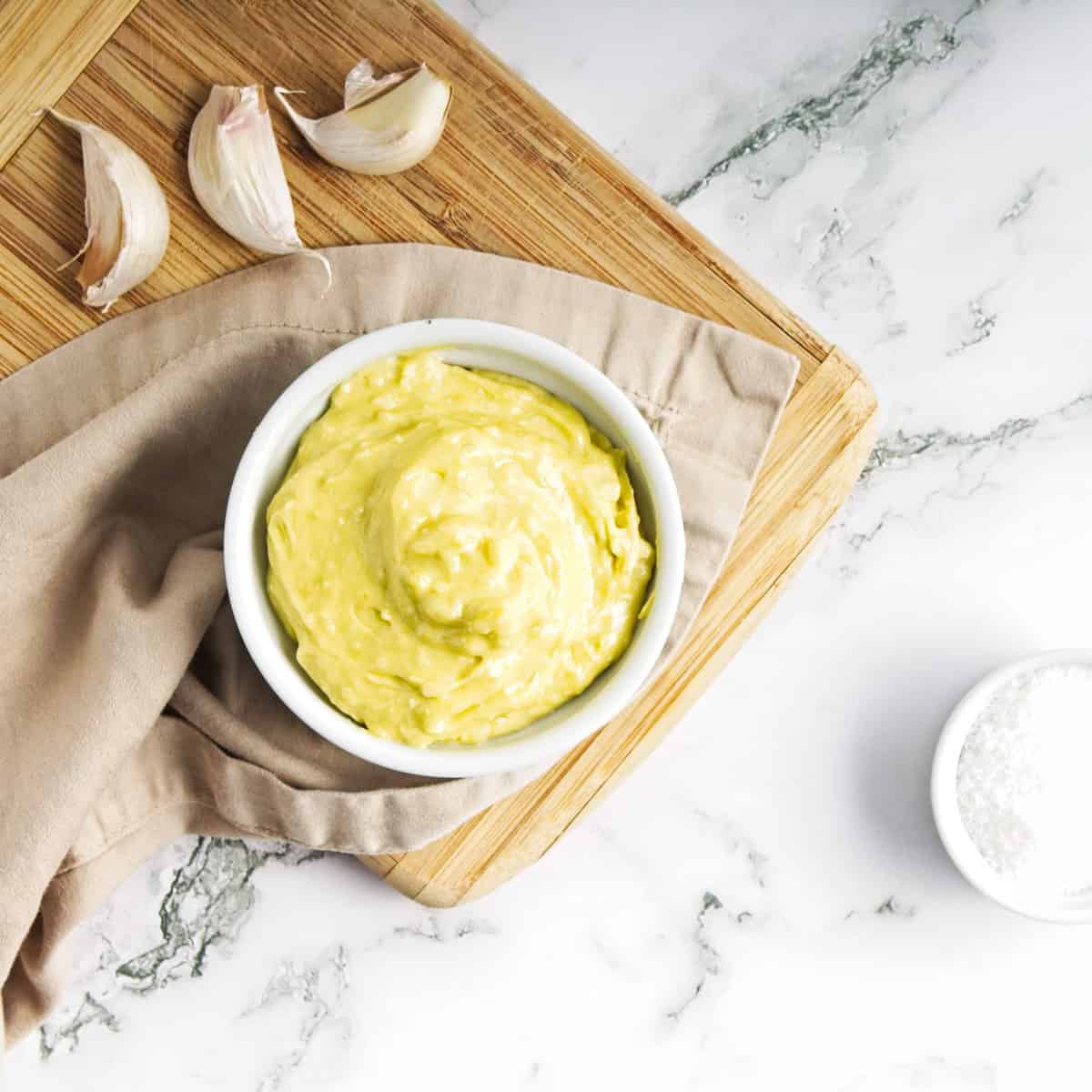
Homemade dressing and dips are the best! Have fun making these other easy homemade sauces. Two of my favorites are this small batch of balsamic dijon vinaigrette and a classic buttermilk ranch dressing that, like the garlic mayo is great as a dip for fresh crisp vegetables.
4 Reasons to Try This Recipe
- Quick: The recipe only takes a few minutes to prepare.
- Versatile: The base is versatile and you can add any number of ingredients.
- No Egg: This is made without any eggs!
- No Waste: With homemade mayonnaise, you can make just what you need for a few days and always have a fresh preservative-free batch ready
Ingredients Needed
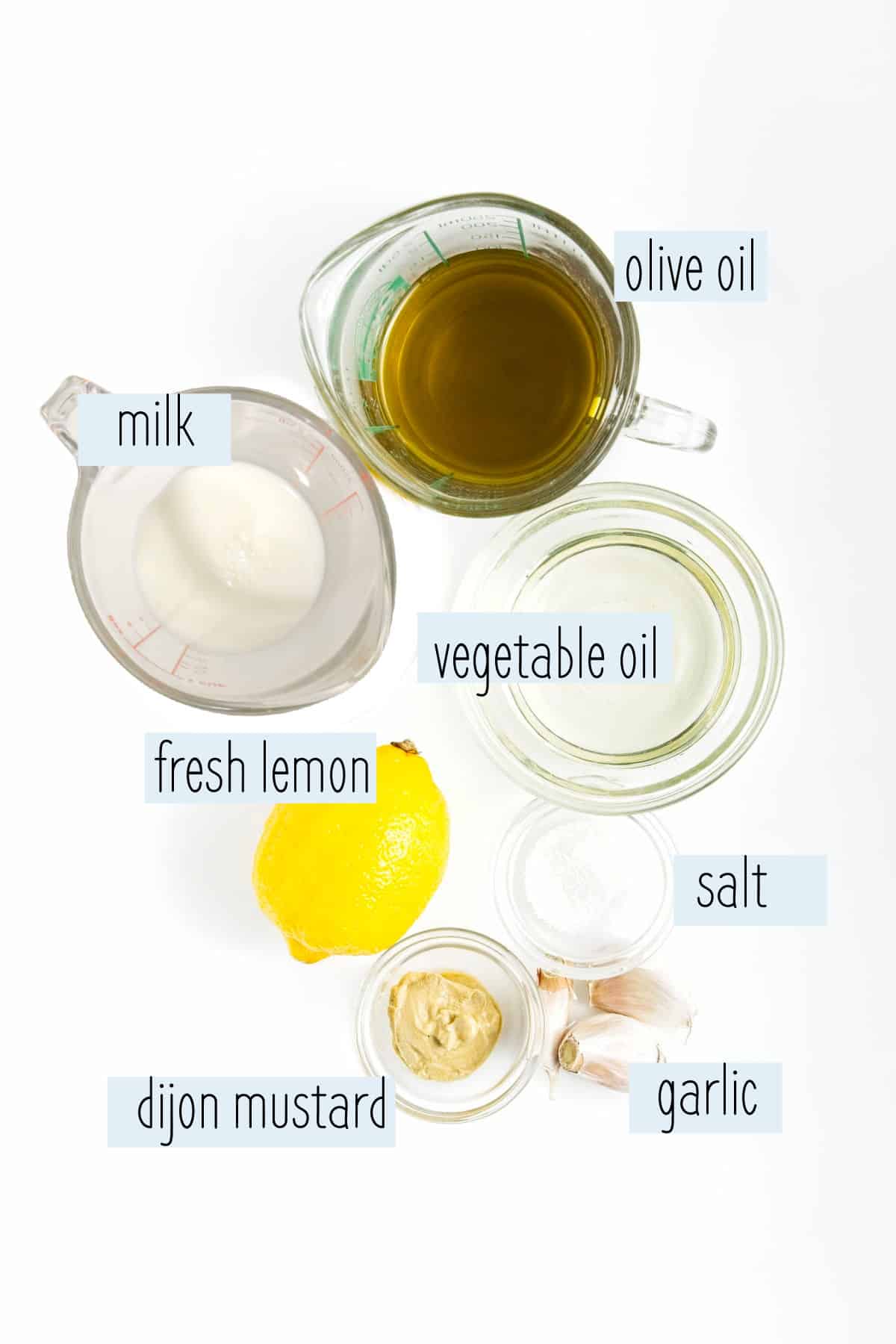
Full ingredient list and instructions are located in the recipe card at the bottom of this post.
Recipe Variations
- Herb Mayo – Replace the Dijon with fresh or dried herbs like dill, basil, or chives.
- Spicy Mayo – Instead of Dijon and garlic, add chili flakes, hot sauce, Wasabi, or Sriracha.
- Lemon Pepper Mayo – Replace the Dijon and stir in fresh lemon zest and cracked black pepper.
- Sun-Dried Tomato Mayo – Replace the Dijon with sun-dried tomatoes and a blend of Italian seasoning.
- Tartar Sauce – Add chopped pickles, capers.
- Pesto Mayo – Incorporate prepared pesto sauce or homemade pesto with fresh basil, garlic, nuts, and olive oil.
- Olive Mayo – Replace the Dijon and add chopped olives and perhaps some oregano.
- Horseradish Mayo – Replace the Dijon and garlic Mix in freshly grated horseradish or prepared horseradish sauce.
Ingredients Preparation Steps
Although only a few ingredients are needed, its a good practice to measure and prep before you begin mixing the mayo.

Step 1: Finely mince the garlic or crush using a garlic press. I love garlic so you do however much you like. Squeeze the fresh lemon.
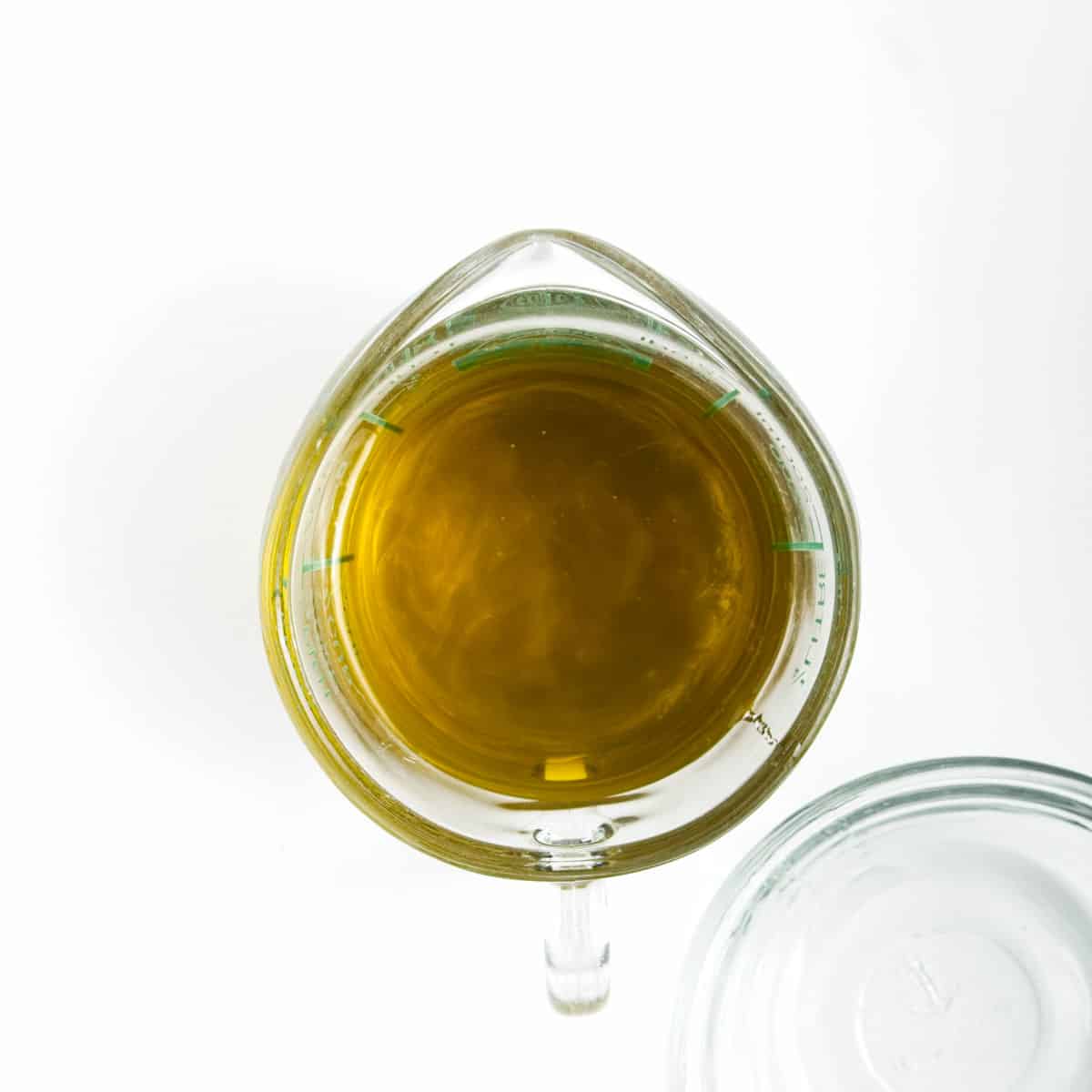
Step 2: Combine the oils and set aside.
The Mixing Process
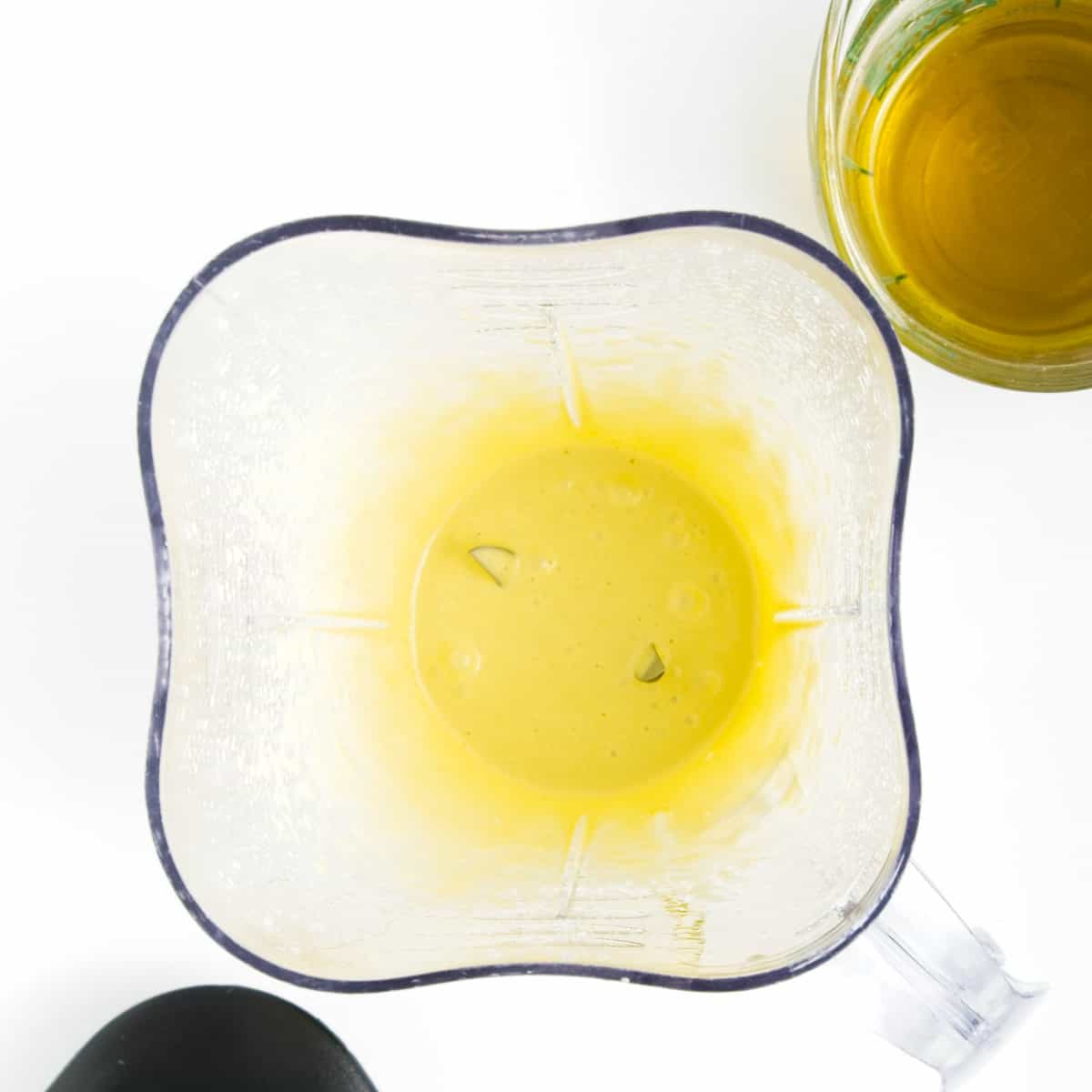
Step 3: Add the lemon juice, milk, and mustard into the blender. Cover the blender or small food processor, leaving only a small crack (or remove the portion of the lid that allows additions), and turn on the low setting. Blend until well mixed.
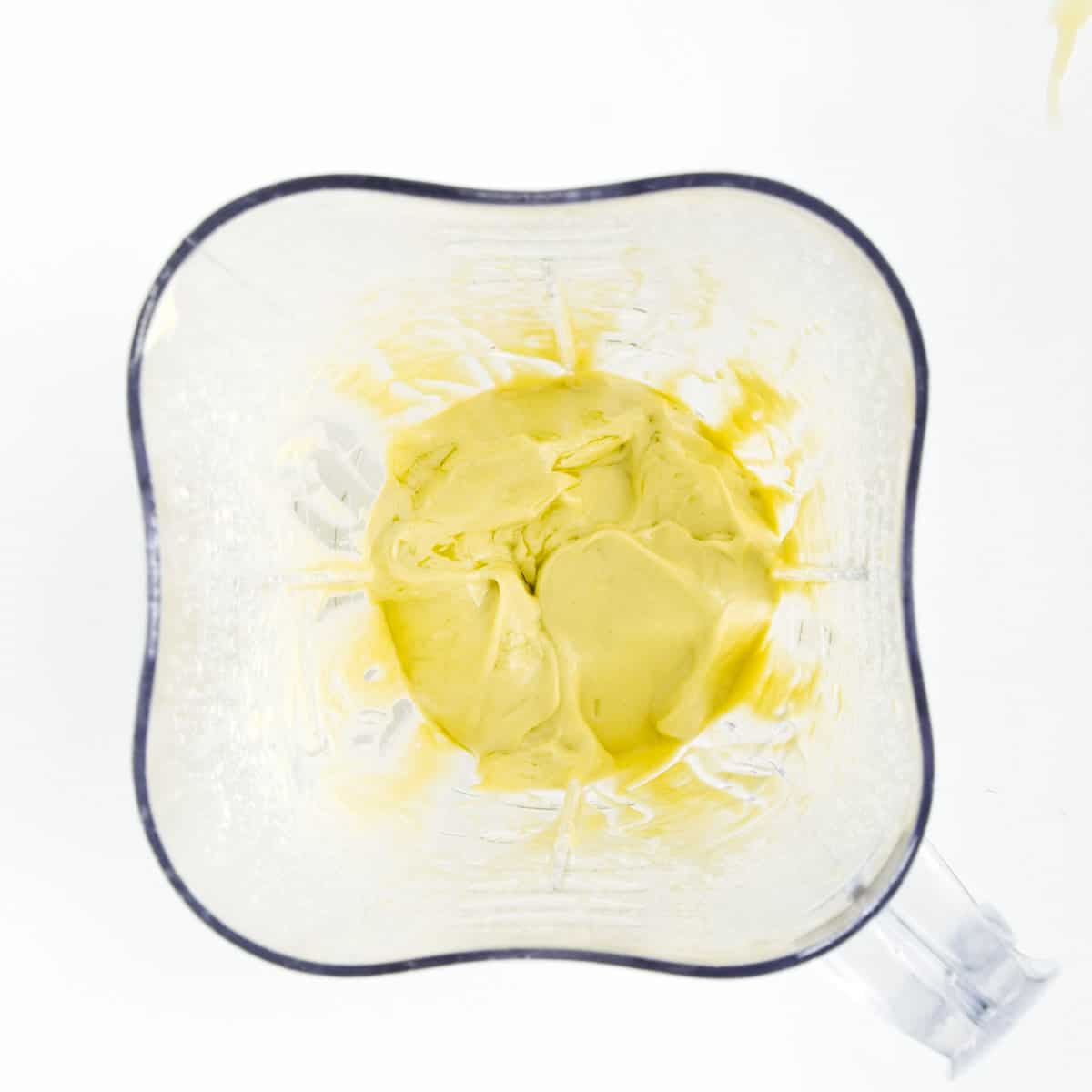
Step 4: Add the blended oils 1 teaspoon at a time, allowing the blender to run for 5 seconds after each addition. With the blender running, you can pour the oil into the blender in a very thin stream. It should only take about a minute. Pause occasionally to scrape down the sides.
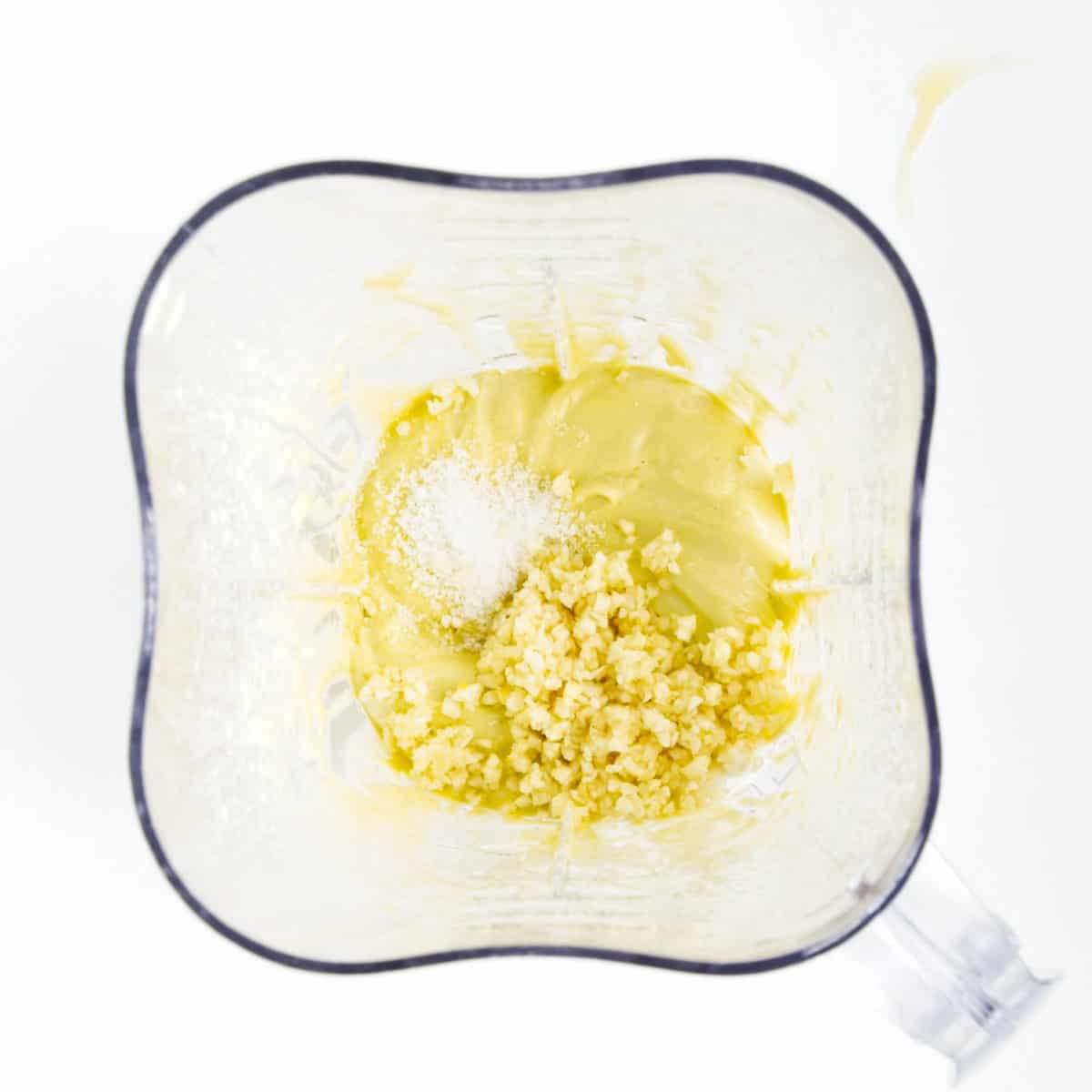
Step 5: Once the oil is completely incorporated, the mix should be thick and pale. Add the salt and minced garlic.
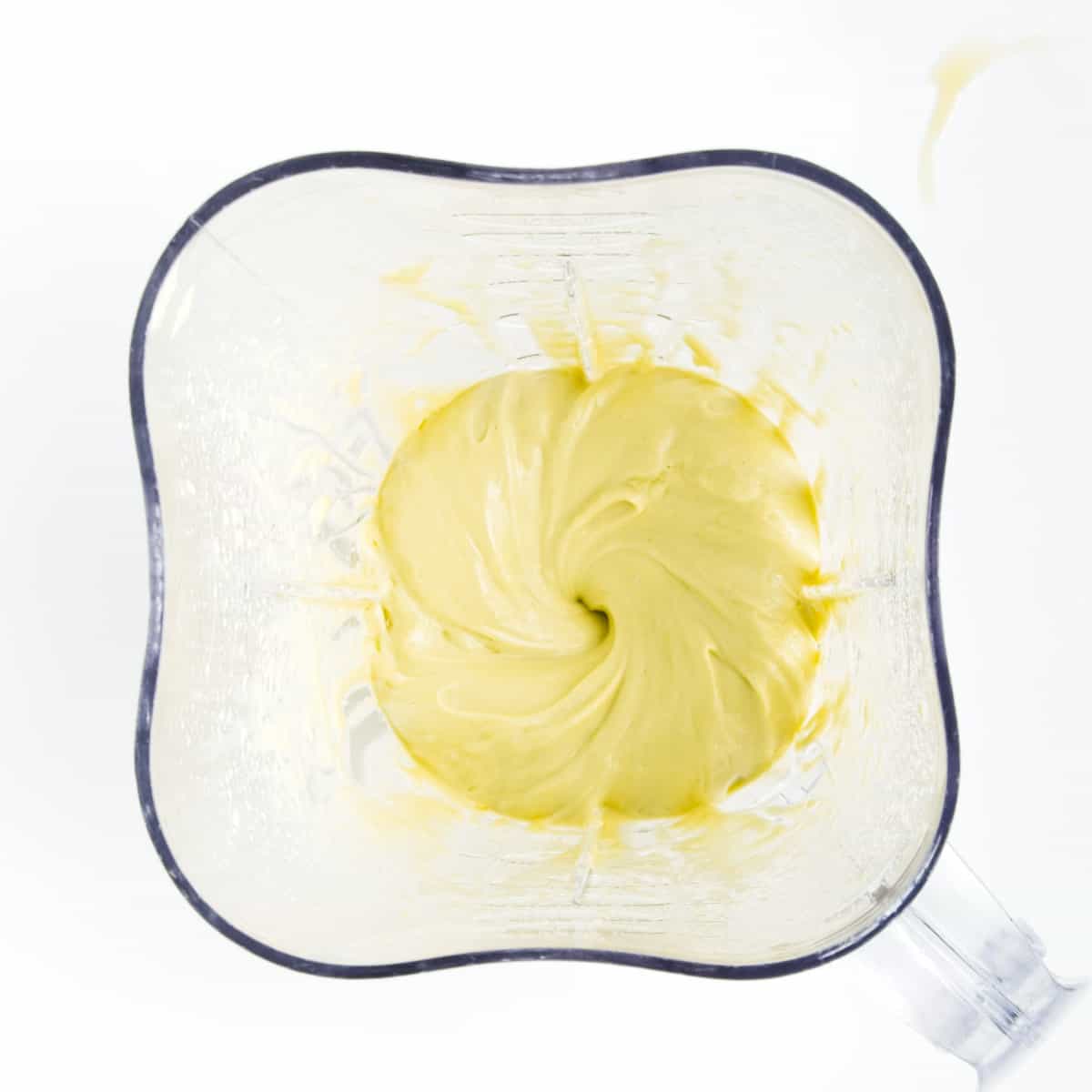
Step 6: Pulse the blender several times to incorporate. The mixture should now be thick and creamy. Chill before serving.
Important Recipe Tips
- Use a neutral-flavored vegetable oil like sunflower, grapeseed, or canola are all good choices. A neutral-flavored oil doesn’t interfere with the other ingredients and ensures that the other flavors are not overpowered!
- It’s important to add the oil slowly otherwise it won’t thicken properly. By adding the oil slowly, you allow the liquid ingredients to gradually accept the oil, forming a stable, uniform emulsion. Slowly adding the oil helps in achieving the creamy, thick consistency characteristic of mayonnaise. Adding the oil too quickly and you will have a thinner, more liquid texture rather than the rich creaminess desired.
- No blender, no problem, you can combine the ingredients into a large measuring cup and use an immersion blender.
How to Store Leftovers
For the best quality, you can store covered in the refrigerator for about 3 days. In my experience, the mayo is best after one day, which gives the flavor time to develop.
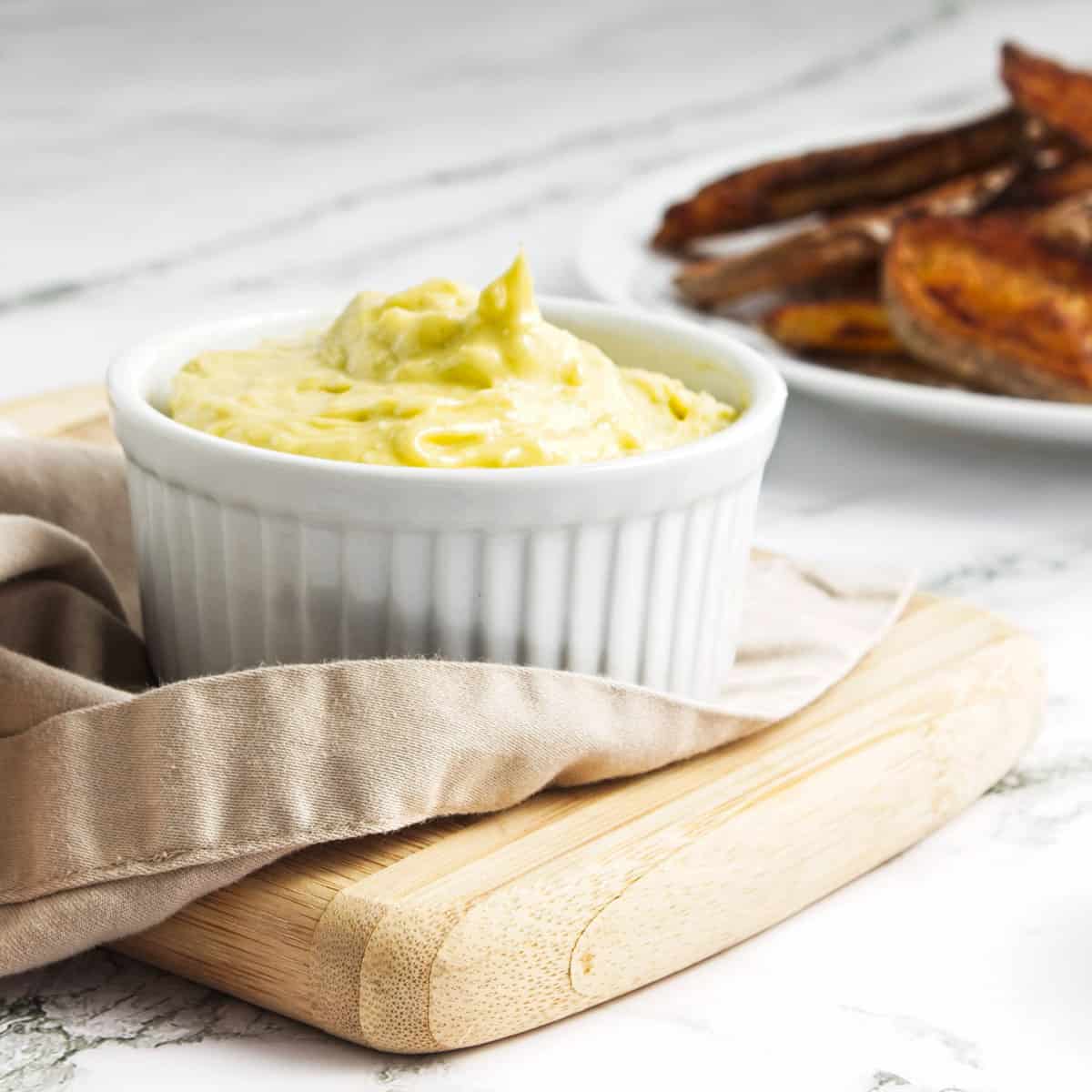
FAQs
?Frequently Asked Questions
An egg-based mayo has a thick, creamy, and velvety texture. Egg yolks serve as an emulsifier that helps oil and other ingredients blend smoothly, creating that rich texture. The texture of an eggless mayo is a little less rich and creamy and has a lighter and cleaner flavor.
First, the reason I prefer milk is because it gives a nice texture and most people have this ingredient handy. Another popular option is Aquafaba (chickpea liquid) but I personally don’t want to open a can of chickpeas just for the liquid! If this is something you want to try, the next time you open a can, save the liquid for later use. Aquafaba creates a good enough emulsion and produces a lighter, fluffy texture. Just understand that any of substitutions will change the flavor and texture.
Technically yes, but flavor-wise you should use freshly squeezed lemon juice. The bottled stuff has preservatives and to me, always has a little artificial flavor. If you have a brand you like and the flavor is good then go for it.
A white wine vinegar or apple cider vinegar will give you the acidity you need.
Ways to use Garlic Mayonnaise
Did you make this recipe? I would love it if you left a comment or review! Be sure to sign up for the email list and follow “A Weekend Cook” on Pinterest and my Facebook page.
Want to Save This Recipe?
Enter your email & I’ll send it to your inbox. Plus, get great new recipes from me every week!
By submitting this form, you consent to receive emails from A Weekend Cook®.
Eggless Garlic Dijon Mayo
Ingredients
- ¼ cup milk
- 2 teaspoons fresh lemon juice
- ½ teaspoon Dijon mustard
- ¼ cup olive oil
- 2 tablespoons vegetable oil nuetral flavor
- 2 cloves garlic minced
- ¼ teaspoon salt
Instructions
Prep
- Finely mince the garlic as much as possible or crush using a garlic press. Squeeze the fresh lemom.
- Combine the oils and set aside.¼ cup olive oil, 2 tablespoons vegetable oil
Mix
- Add the lemon juice, milk, and mustard into the blender. Cover the blender or small food processor, leaving only a small crack (or remove the portion of the lid that allows additions) and turn on low setting. Blend until well mixed.2 teaspoons fresh lemon juice, ½ teaspoon Dijon mustard, ¼ cup milk
- Add the blended oils 1 teaspoon at a time, allowing blender to run for 5 seconds after each addition. With the blender running, you can pour the oil into the blender in a very thin stream. It should only take about a minute. Pause occasionally to scrape down the sides.
- Once the oil is completely incorporated, the mix should be thick and pale. Add the salt and minced garlic, pulsing several times to incorporate.2 cloves garlic, ¼ teaspoon salt
- Scrape into a glass container and refrigerate until ready to serve.
Notes
- Use a neutral flavored vegetable oil like sunflower, grapeseed, or canola are all good choices. A neutral-flavored oil doesn’t interfere with the other ingredients and ensures that the other flavors are not overpowered!
- It’s important to add the oil slowly otherwise it won’t thicken properly. By adding the oil slowly, you allow the liquid ingredients to gradually accept the oil, forming a stable, uniform emulsion. Slowly adding the oil helps in achieving the creamy, thick consistency characteristic of mayonnaise. Adding the oil too quickly and you will have a thinner, more liquid texture rather than the rich creaminess desired.

